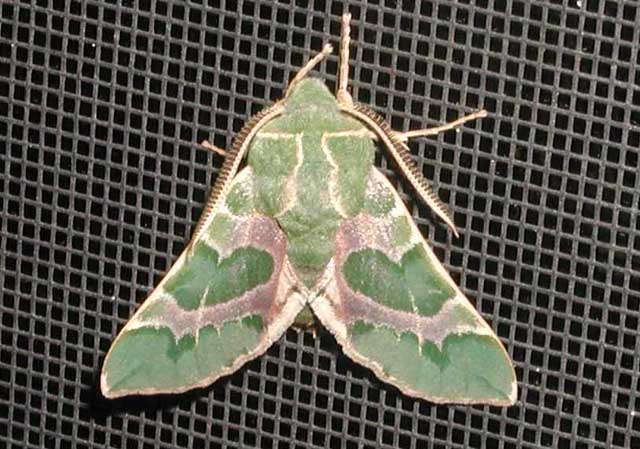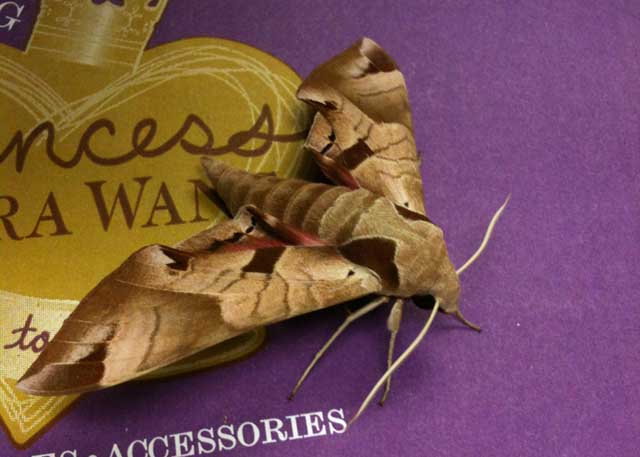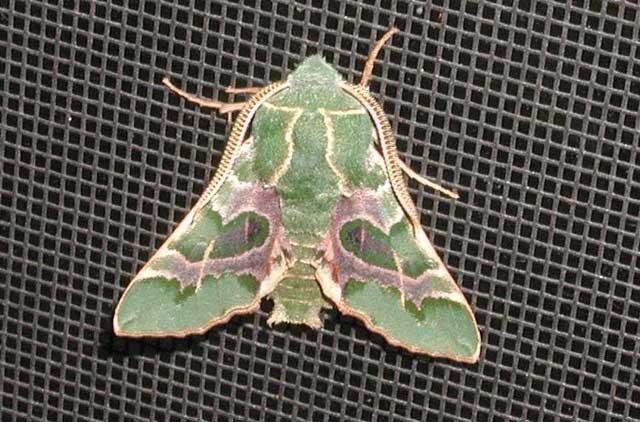Fresno County, California
Sphingidae


Jack writes, "I took these pictures Jan 09, 2006, in the evening after dark. There were five or six of them on my screen to the sliding glass door. We were having dinner with friends around seven pm.. My neighbor Fred said he had seen them lately at his house about a mile away too. After about a week we did not see them anymore. We live in cattle country. I do not believe we have primrose. Hope you enjoy the pictures. You may use them as you wish. I enjoyed your website."
Many thanks also to Monique D. Montoya who sends the image of Eumorpha achemon below.

Eumorpha achemon, Clovis, Fresno County, California,
July 11, 2012, courtesy of Monique D. Montoya.
It is hoped that this checklist, with the thumbnails and notes, will help you quickly identify the moths you have encountered.
A WO" after the species name indicates that I have no confirmed reports of this species in Fresno County, but I (William Oehlke) expect that this moth is present.
A USGS indicates the moth is reported on the USGS website and/or in Moths of Western North America, #2. Distribution of Sphingidae of Western North America, revised, an excellent little booklet available through Paul Opler.
Please help me develop this list with improved, documented accuracy by sending sightings (species, date, location), preferably with an image, via email to Bill Oehlke.
Sphinginae subfamily
Smerinthini Tribe:
Macroglossinae subfamilyDilophonotini Tribe:
Philampelini Tribe:
Macroglossini Tribe:
|

Enjoy some of nature's wonderments, giant silk moth cocoons. These cocoons are for sale winter and fall. Beautiful Saturniidae moths will emerge the following spring and summer. Read Actias luna rearing article. Additional online help available.
Use your browser "Back" button to return to the previous page.
This page is brought to you by Bill Oehlke and the WLSS. Pages are on space rented from Bizland. If you would like to become a "Patron of the Sphingidae/Catocala Sites", contact Bill.
Please send sightings/images to Bill. I will do my best to respond to requests for identification help.
 Show appreciation for this site by clicking on flashing butterfly to the left. The link will take you to a page with links to many insect sites. |